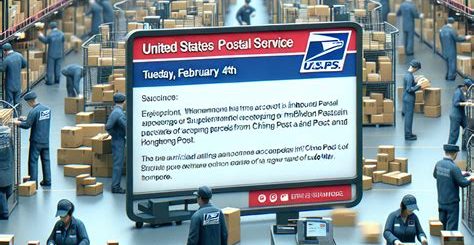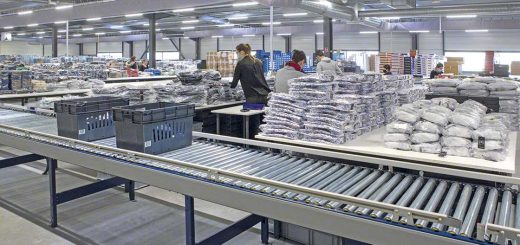German Outdoor Retailers: Stocking Up on Chinese Adventure Gear & Apparel with Consolidation
Subtitle: Boost Margins, Accelerate Inventory Turns, and Meet EU Standards with Strategic Logistics
Germany’s outdoor retail market is a €8.2 billion powerhouse, driven by a nation of avid hikers, climbers, and campers—62% of Germans participate in outdoor activities monthly. For retailers from Munich’s alpine shops to Berlin’s urban adventure stores, staying competitive means balancing quality, affordability, and variety. Chinese suppliers have emerged as key partners, offering durable tents, waterproof jackets, and hiking boots at 30–50% lower costs than European brands. Yet, importing small batches of diverse gear efficiently remains a challenge. Consolidation shipping—aggregating orders from multiple Chinese suppliers into one optimized shipment—has become the solution, enabling German retailers to cut logistics costs by 40–60%, reduce restocking times by 25–35%, and simplify compliance with EU regulations. This guide explains how to leverage consolidation for profitable, scalable inventory management.
Why German Outdoor Retailers Choose Chinese Adventure Gear
Germany’s outdoor enthusiasts demand gear that performs in the Alps’ harsh conditions—from -15°C winters to rain-soaked summers—while expecting reasonable prices. Chinese manufacturers deliver on both fronts, with three key advantages:
1. Cost Efficiency for Price-Sensitive Shoppers
German consumers compare prices across EU markets, making affordability critical. Chinese suppliers offer:
- Hiking Boots: Waterproof leather boots with Vibram soles cost €45–€70, vs. €120–€200 from German brands like Lowa.
- Tents: 4-season alpine tents (PU 5000mm waterproofing) retail for €80–€120 in China, compared to €200–€350 from EU brands like Vaude.
- Softshell Jackets: Windproof, water-resistant jackets price at €35–€55 in China, vs. €100–€180 from The North Face or Patagonia.
For a mid-sized retailer in Cologne with 3 stores, these savings translate to €40,000–€60,000 annually—funds that can be reinvested in in-store experiences or digital marketing. A Munich retailer notes: “Chinese gear lets us offer entry-level hikers a full setup (boots, jacket, backpack) for €200, vs. €450 with European brands—expanding our customer base.”
2. Quality & Compliance with German Standards
Chinese manufacturers engineer gear to meet Europe’s strict performance criteria:
- CE Certification: Tents and climbing harnesses comply with EN 13775 (mountaineering equipment) and EN 345 (protective clothing), ensuring safety in alpine environments.
- Sustainability: OEKO-TEX® certified apparel (no harmful chemicals) and bluesign® approved fabrics align with Germany’s eco-conscious shoppers (68% prioritize sustainable brands).
- Durability Testing: Gear undergoes stress tests (e.g., 10,000 zipper cycles, 500 wash cycles for jackets) to match German expectations for long-lasting products.
A Berlin-based outdoor chain tested Chinese vs. European hiking boots in the Bavarian Alps: “Both lasted 800+ km, but the Chinese pair cost half as much—our customers couldn’t tell the difference.”
3. Diversity for Niche Markets
Germany’s outdoor scene spans urban commuters, alpine climbers, and family campers. Chinese suppliers cater to all:
- Alpine Gear: Crampons, ice axes, and high-altitude tents for the Zugspitze and Matterhorn.
- Urban Adventure: Foldable backpacks, waterproof phone cases, and reflective jackets for city-to-trail commuters.
- Family Camping: Large 6-person tents, portable grills, and kid-friendly hiking gear (adjustable boots, lightweight backpacks).
A Salzburg retailer specializing in family camping reports: “Chinese suppliers offer 3x more kids’ sizes than European brands, helping us capture a niche market.”
How Consolidation Optimizes Inventory for German Retailers
For German outdoor retailers, importing individual items from China (a jacket from Guangzhou, a tent from Zhejiang) is costly and disjointed. Consolidation—combining these into one shipment—solves these pain points:
1. Significant Cost Savings
- Lower Per-Unit Shipping Rates: Sending a single jacket via DHL costs €10–€15. Consolidating 200 items (apparel, tents, boots) drops the per-unit rate to €1.50–€3, saving 70–80%.
- Bulk Freight Discounts: Consolidators negotiate volume rates (e.g., 30% off rail shipping for 500kg+ orders) and pass savings to retailers. A Frankfurt chain with 15 stores saved €32,000 last year using consolidated rail freight.
- Reduced Overhead: Managing 5–10 separate shipments eats up 15–20 hours/week. Consolidation cuts this to 3–5 hours, freeing staff to focus on customer service and merchandising.
2. Faster, Predictable Restocking
- Optimized Routes for Outdoor Gear:
- Rail Freight: The China-Europe Railway Express delivers to Hamburg via Duisburg in 18–22 days—ideal for non-urgent bulk orders (e.g., 500 winter jackets in August).
- Air Freight: Time-sensitive items (e.g., rain jackets before Germany’s wet spring) fly to Frankfurt Airport in 5–7 days, with consolidation cutting air costs by 30%.
- Sea Freight: Large items (e.g., 200 tents) ship to Hamburg (28–32 days) then truck to Munich or Cologne (1–2 days), with rates as low as €1–€2 per kg.
- Seasonal Alignment: Fixed transit windows let retailers stock for peak seasons:
- March–April: Hiking boots and lightweight jackets for spring trails.
- June–July: Camping gear and swimwear for summer holidays.
- September–October: Waterproof jackets and thermal layers for autumn.
A Berlin retailer notes: “Consolidation lets us restock 2 weeks faster for Oktoberfest camping season—critical for capturing 30% of annual sales.”
3. Compliance & Quality Control
- In-China Inspections: Consolidation warehouses (Shanghai, Guangzhou) verify:
- Apparel sizing (EU standards: S-M-L vs. Asian sizes).
- Waterproofing (tents tested to 5,000mm water column).
- Compliance labels (CE logos, German care instructions: “Waschen bei 30°C”).
- Regulatory Expertise: Consolidators handle EU paperwork:
- CE certificates for tents and climbing gear.
- REACH declarations (no restricted substances in fabrics).
- German-language labeling (material breakdowns, origin: “Hergestellt in China”).
The Consolidation Process: From Chinese Factories to German Shelves
Importing outdoor gear via consolidation follows a streamlined workflow, designed to protect gear and accelerate shelf readiness:
Step 1: Supplier Coordination & Order Alignment
- Multi-Supplier Aggregation: Retailers source from 5–8 Chinese suppliers and direct all shipments to a single consolidation warehouse. A Munich chain explains: “We send our seasonal plan to suppliers—they ship to China’s warehouse by the 10th of each month, and we consolidate once.”
- Free Storage: 30–45 days of free storage in China lets retailers collect items (e.g., 100 jackets + 50 tents) before shipping, avoiding partial deliveries that delay in-store displays.
Step 2: Warehouse Processing in China
- Kitting & Branding: Items for the same promotion (e.g., “Alpine Starter Kit: jacket + boots + backpack”) are grouped and tagged with retailer SKUs. Private-label gear (e.g., a Cologne store’s branded tents) receives custom logos and hangtags.
- Dimensional Optimization: Bulky items (tents) are compressed; apparel is folded to reduce volume by 20–25%, lowering freight costs. A Stuttgart retailer reports: “Consolidation cut our shipping volume by 1/3, saving €8,000 yearly.”
- Quality Checks: Third-party inspectors (SGS, Intertek) test:
- Jacket waterproofing (spray test for 30 minutes).
- Tent pole strength (loaded to 50kg).
- Boot sole adhesion (pull test to 15N).
Step 3: Shipping to Germany
- Mode Selection Based on Seasonality:MethodCost (per kg)Transit TimeBest ForRail Freight€2–€418–22 daysWinter jackets, bulk apparel.Air Freight€7–€115–7 daysRain gear, last-minute restocks.Sea Freight€1–€228–32 daysTents, camping equipment, off-season stock.
- Real-Time Tracking: Retailers monitor shipments via German-language dashboards (e.g., “Verlässt Shanghai” [Leaves Shanghai], “In Hamburg Lager” [In Hamburg Warehouse]) with alerts for delays (e.g., port congestion).
Step 4: Customs Clearance & In-Store Delivery
- Documentation Excellence: Consolidators prepare paperwork to breeze through German customs:
- Commercial invoices with HS codes (e.g., 6210 for jackets, 6306 for tents).
- CE certificates and material safety data sheets (MSDS).
- Origin declarations to qualify for EU low-value exemptions (≤€150).
- Duty & Tax Handling: For shipments over €150, consolidators calculate and prepay 19% German VAT and 4% import duty, providing a single invoice for German accounting systems (DATEV, SAP).
- Shelf-Ready Delivery: Gear is transported to stores via climate-controlled vans. Many providers offer “retail-ready” service: unpacking items, applying price tags, and arranging displays (e.g., folding jackets, setting up tent demos)—saving German retailers 6–8 hours of labor per shipment.
Case Study: A German Outdoor Retailer’s Success
A 10-store chain in Bavaria (annual revenue €8 million) faced challenges importing Chinese gear:
- Previous Struggles:
- High costs: €12 per jacket in shipping.
- Returns: 15% of tents arrived with broken poles, costing €18,000 yearly.
- Delays: 30% of winter jackets missed October launch (peak buying season).
- Solution: Partnered with a consolidation provider specializing in outdoor gear.
- Results:
- Costs: Shipping 5,000 items via rail freight cost €7,500 total (€1.50 per item), saving €52,500 vs. individual shipping.
- Quality: Pre-shipment testing reduced defective tents to 1%, eliminating return costs.
- Timelines: Rail deliveries arrived 21 days after ordering, ensuring 100% stock for October’s winter gear launch.
- Sales Impact: Faster restocks and lower prices boosted same-store sales by 18%, with customer satisfaction scores rising 12% (thanks to better inventory availability).
Choosing the Right Consolidation Partner
German outdoor retailers should prioritize providers with:
- Outdoor Gear Expertise: Experience shipping waterproof apparel, tents, and climbing equipment—with staff trained in handling delicate items (e.g., down jackets, GPS watches).
- Germany-China Network: Offices in Guangzhou and Munich for on-the-ground support (e.g., resolving supplier delays or sizing issues).
- Sustainability Credentials: Carbon-neutral shipping (e.g., rail freight with wind energy offsets) to align with Germany’s “Green Deal” goals.
- Technology Integration: APIs to sync with retail POS systems (e.g., Shopify, SAP Retail) for automated inventory updates and order tracking.
Conclusion
For German outdoor retailers, consolidation transforms Chinese gear imports from a logistical headache into a competitive advantage. By aggregating orders, leveraging efficient routes to Hamburg and Frankfurt, and partnering with experts, retailers reduce costs, accelerate restocks, and ensure gear meets German quality and sustainability standards. Whether stocking alpine climbing gear or family camping equipment, consolidation ensures shelves are full, margins are healthy, and customers keep returning for more—proving that smart logistics are the backbone of success in Germany’s outdoor retail market.


